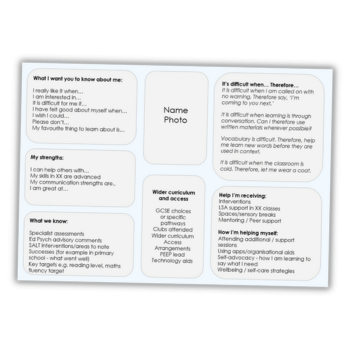Behaviour as communication – What are your learners telling you?

It’s tempting to assume that learners’ behaviour results from conscious decision-making – but that’s not always the case, says Amanda Wright

- by Amanda Wright
- Head of Whole School SEND at nasen

A complex range of factors influence behaviour. This includes physical factors, such as medical conditions or disability, as well as psychological factors, like emotional trauma or delayed social development.
Behaviour is even affected by elements of the learning environment itself, such as noise levels or seating arrangements.
Add to those the raft of social influences at play – discrimination or bullying, for instance – and it’s easy to see how some situations can trigger behaviours that challenge.
As education professionals, however, we are responsible for creating safe learning environments in which youngsters can feel that they belong; places where they can learn, achieve and make progress towards happy and fulfilling adult lives. So how should we reflect this in our daily practice?
Know what influences behaviour
It’s important for practitioners to explore what factors might lie behind their students’ behaviour, and add depth to their understanding by learning about their individual context in order to encourage more positive engagement.
Identify and anticipate triggers
Work with the other adults in your classroom or setting to identify changes in behaviour and possible explanations for these. Where appropriate, talk to students and other stakeholders and try to unpick any reasons for behaviours that challenge.
Remember, behaviour is communication. Behaviours that challenge may be indicative of underlying unmet needs.
Encourage self-reflection and share coping strategies
Students should learn to recognise and be conscious of how they’re feeling and what support they might need. This might involve the student chatting with an adult away from the classroom, or spending time in a safe space to self-regulate.
Perhaps they need a change of activity or a chance to stim. However, the aim of any coping strategies should always be to enable a return to learning as soon as possible.
Promote positive behaviours through strong relationships
Create an ethos that recognises the individual, celebrates mutual respect and ensures everyone feels valued.
Further training
We further explore the theme of behaviour as communication in a new online SEND CPD unit from Whole School SEND and Real Group. This is part of the Universal Services programme, which the DfE is funding until 2025.
The free-to-access unit is one of a series of 20 that will be released over the course of the programme to help practitioners explore some of the most commonly observed barriers to learning in classrooms and other learning environments regardless of age, label or area of need.
Amanda Wright is head of Whole School SEND, having joined in 2018 as a Regional SEND Leader; prior to this, she worked in mainstream education for 20 years and has extensive experience as a SENCo and senior leader. Read more about behaviour management strategies for early years, primary and secondary.










